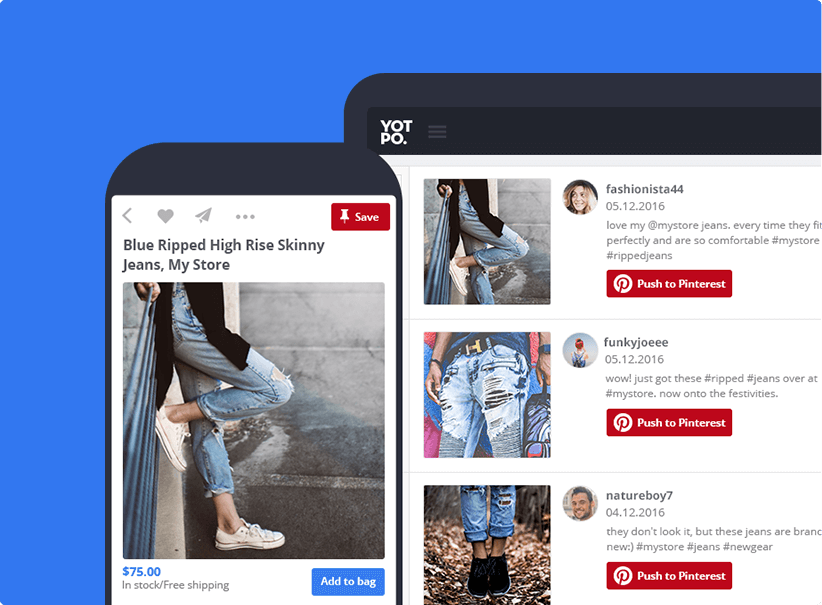Ezra Firestone has over ten years of experience in online commerce.
Not only has he launched several seven- and eight-figure businesses, he is also the founder of Smart Marketer, one of the top online training programs for store owners.
Ezra advises marketers and business owners around the world through his renowned digital training programs, informed by his real-life experience owning and operating successful eCommerce companies.
This is part 2 in our interview series with Ezra. In part 1, which you can read here, Ezra shared his views on where the world of eCommerce is headed as social channels take over.
In this post, learn:
- How social strategies should change as brands grow
- How to balance resources across many platforms
- Why paid ads matter so much on social
- What’s next for Instagram, and why Pinterest is becoming so significant
Growing through social
Ezra: Once you are making over $1 million a year and you have an average profit margin between 15%-30%, that means that you have $150,000-$300,000 left in your pocket at the end of the year to reinvest in your business.
The number one thing that people forget when investing is that at least 50% of their profit should go back into their business in the form of advertising or content.
You get out what you put in, and when people try to pull out too much from their business, they go bankrupt or stop their ability to grow.
If you are a $1 million-plus brand, you are doing yourself a disservice if you are not putting at least 50% of your profit back into the business in one of two ways:
- Advertising to generate new leads, subscribers, and fans
- Investing in high-quality, engaging content that you can syndicate across social platforms
Different users prefer to consume content in different formats, so I recommend investing in at least one piece of content per week that then optimizes into video, image, and text, syndicated across all your social channels and then amplifying it with advertising.
Strike a balance between word-of-mouth and paid ads
Ezra: Pick one channel to get really good at.
However, you can’t rely solely on organic traffic from a social channel, you must have an ad-driven model.
Ezra: Organic traffic isn’t reliable and shouldn’t be your sole source of traffic.
I was in eCommerce when search engine optimization was all you did. I had several drop shipping stores, and we relied on Google and SEO to get traffic.
Then, literally overnight, half the people I knew went out of business because Google changed their algorithm.
I realized then that if you really want to have a business, you have to go to the traffic store and buy traffic.
If you are relying on free traffic – whether from Google, social, or Amazon, they could just change their rules and then you’re done.
The importance of a brand story
Ezra: It all comes down to storytelling.
At the end of the day, every brand is communicating about a collective experience that their prospects are having and how you can improve that experience.
If you don’t have a good story, if you aren’t resonating with people when they read your copy, engage with your videos, or see your brand — then it doesn’t matter.
What brands really have a problem with is hitting that emotional engagement and finding that story that’s actually going to resonate. You’ve really got to figure out what you’re doing beyond trying to sell people stuff.
What’s Next for Pinterest and Instagram
Ezra: Now, people are able to buy straight from social — and even more so in the future, you’ll be able to have a seamless buying experience.
Until now social has been mostly for acquisition and awareness, but it’s changing.
One-click purchasing is only going to get better and more prevalent in 2017.
By 2018, it’s going to be a huge factor.
Ezra: People go to Instagram for inspiration.
On Facebook, for example, about 78% of your relationships are reciprocal and then there is 10-20% of people that you might be following and not be friends with.
People on Instagram get upset when you are very direct in sales. Your content has to be more aspirational, more story-based, more conversational in order for it to do really well.
Also, both Instagram and Pinterest are 90%-plus mobile environments, so content must be optimized for mobile.
Ezra: Pinterest is the fastest-growing social network by percentage of users on a yearly basis. And its fastest-growing demographic is men right now, even though 80% of its users are women.
I think it is the next frontier for eCommerce brands.
Ezra: Pinterest is a future engine.
Pinterest released a statistic indicating that 88% of people who have saved a Pin have done so in search of a purchase. A lot of people are going to Pinterest to look for things they want, to save them and then come back later.
So, the way that you engage on Pinterest is a little different. It’s more of a long-form conversation.
Pinterest also has a combination between contextual and query-based traffic and data. People type queries on Pinterest, but Pinterest also has contextual data on them based on what they are interested in.

Top Takeaways:
Pick one social platform and master it before moving on to any others. Start a conversation with your content and adapt it to suit each channel’s character. Make sure to amplify your content with ads.













 Join a free demo, personalized to fit your needs
Join a free demo, personalized to fit your needs